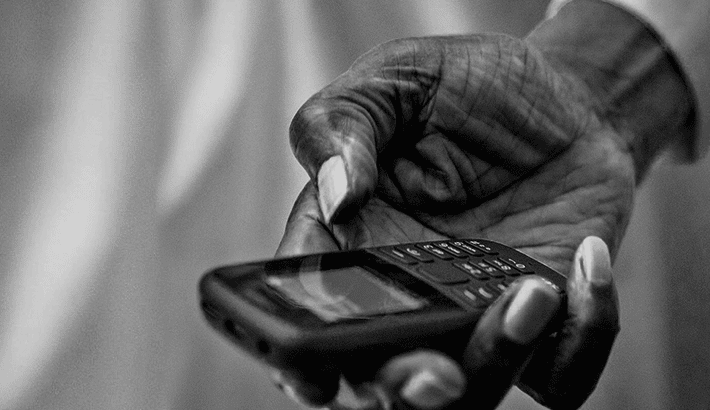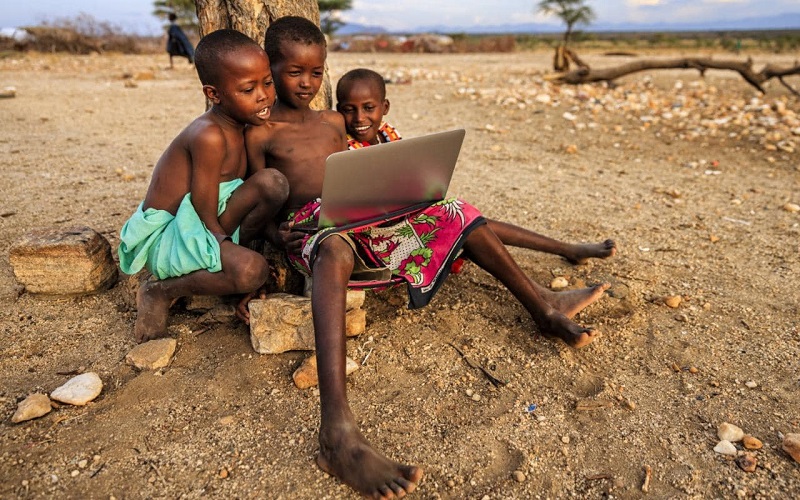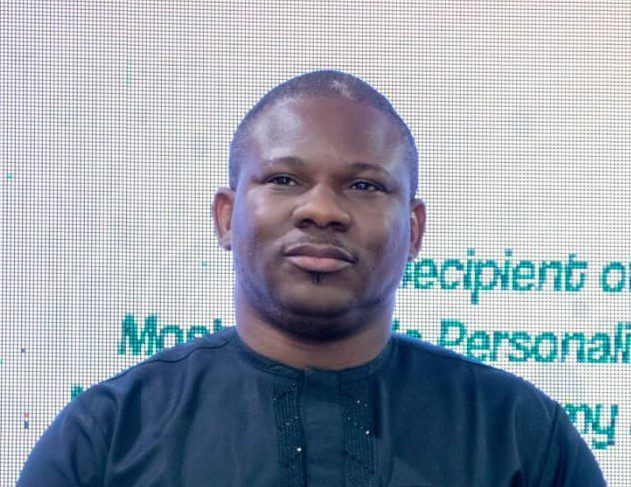







































All you should know about Nigeria’s internet: Why it works and why sometimes it doesn’t
 FIRE
FIRE
 WHEN
WHEN
 8
8
 READ
READ
 WOULD
WOULD
A few days ago, Technext hosted a Space discussion on Nigeria’s internet space, where we explored why it sometimes works like magic and other times drives us crazy.
That conversation had the presence of five experts in the Nigerian telecoms space: Abioye Tomiwa, Regional Manager at ZTE, Adeyinka Isioye, Chief Experience Officer at FibreOne Broadband, Olayemi Oladele, Chief Technology Officer at VDT Communications, Ayowande Adalemo, Chief Executive Officer, Wave5Wireless and Ibrahim Salami, Head of Service Delivery, FiberOne Broadband.
During the discussion, these experts provided insights into the anatomy of the Nigerian internet ecosystem. They also provided valuable tips on what Nigerians should understand and do to have a quality internet experience in their workflow going forward.
This article looks to provide a summary of that conversation or a recap of the event and make you feel you were there (in case you missed it).
So, let’s go!

What does good internet really mean?
To people, the definition of good internet is subjective and can vary around price, speed and reliability, depending on an individual’s experience.
Mr Ibrahim posits that good internet means different things to Nigerians, depending on what they are using the internet for or the situation they are in. People want to stream Netflix and enjoy their time, and join meetings without network issues. Others want to flip through social media platforms without any glitches. And for some people, it’s the ability to afford mobile data and experience a fair price.
When people can enjoy their activities online, then that’s good internet service.
Meanwhile, when Nigerians experience good internet service, it’s expected that their mobile data usage will burn at a high rate. A couple of times, users complain of data depletion and frequently believe the issue is with the internet service provider (ISP) and mobile network operators (MNOs).

However, Mr Ibrahim provided an insight into that and noted that data burning is more about user utilisation and not that the providers are short-changing the consumers. He pointed out that providers have more bandwidth than they can use and cannot exhaust it.
“I would basically say it is the user’s consumption because the age is changing. The graphics of websites are changing. We have so many graphics on websites these days, whereby once you even open some sites, you will have consumed a lot of data, in terms of the data availability that you have exhausted,” he added.
Also Read: MTN Nigeria under fire as subscribers lament ‘alarming rate’ of voice and data depletion
30-50 Mbps at noon and 2-5 Mbps at night; what’s the likely cause?
Internet users always wonder why they experience a good internet connection during the day and suffer downtimes and low connection later on, especially at night. And this drives people crazy to tap-tap the aeroplane mode or dial *323# to check their data balance.
According to Mr Tomiwa, it depends on some variables such as the network type and fibre optics strength. The 3G, 4G, and 5G have their peak speeds, where 3G is 80 Mbps, 4G is 50 Mbps per second, and 5G is 10 Gbps. He explained that a significant cause of speed reduction is that, during the peak period, when many users are in a particular sector, the sector often becomes overloaded, resulting in a speed reduction.

Another is the fibre angle. He noted that when the infrastructure provided by an internet provider reaches a maximum due to traffic or having a lot of people on the network at once, the speed experienced per individual will be affected. This is common in crowded areas such as Yaba.
A quick fix to this is an infrastructure upgrade, according to Mr Tomiwa. ISPs are currently upgrading their service from GPON to XGPON to XXGPON, and that translates to improved internet service experience. For instance, GPON has a threshold of one gigabit per second and XGPON, which they are now upgrading to, can accommodate up to 10 gigabits per second.
“The issue is an infrastructural issue. If the infrastructure is better and further improved, then I see no reason why we should experience a drop in the quality of the internet at peak periods,” he concluded.
Consideration of a minimum Mbps threshold for ISPs
At the mention of infrastructural upgrade, there was a consideration of the possibility of having a minimum quality of service (Mbps) for ISPs. Experts noted that there’s a need to understand that the telecoms space is all about business, and no provider will consider running at a loss to satisfy customers.
Mr Olayemi explained that internet providers are investors who don’t plan for wastage. When they are to plan for 200 users, they don’t end up rolling out their infrastructure to accommodate 210 users. He noted that they only plan for expansion when they reach a peak and see the need for an upgrade.

Although he pointed out that investing in infrastructure is good, it must be commensurate with what the ISPs are going to make, and that’s the only way that they will continue to maintain the infrastructure for it to deliver.
“When you look at infrastructure, it is good to say that the ISPs should improve their infrastructure, and we should talk about the minimum bandwidth that is recommended to be available for users in the country. But in the actual sense, it is a business.”
“When you meet a standard, what if the cost of that standard is not affordable to the lowest person in the chain of subscribers to the Internet service? So there are a lot of factors that need to be considered before we talk about a standard price or a standard bandwidth availability,” he added.
After the 50% telecoms tariff adjustment, what should Nigerians expect?
Following the 50% tariff increase approved by the Nigerian Communications Commission (NCC) in January, telecom giants like MTN, Glo, Airtel, and 9mobile hiked the costs of data and airtime plans. And to Nigerians, an increase should amount to an improved internet experience.

While industry experts mentioned that the increase wasn’t an enormous adjustment compared to their needs, they had good news for Nigerians. For instance, Mr Tomiwa said that ISPs and the MNOs are in the process of upgrading infrastructures, changing core devices. However, he pointed out that his thing takes because they are done in phases, they are done part by part, and it needs to be planned.
“It is presently ongoing, to the best of my knowledge, it is presently ongoing in most of the ISPs around and most of the MNOs. It is done in phases, and I’m very sure that before the end of the year, Nigerians will be talking about better quality in some locations. I’m just saying, from what I’m seeing, things are getting better already,” he added.
Meanwhile, while these improvements will be rolling out, Mr Ibraim raised the concern surrounding vandalism and fibre cuts. He mentioned that the ongoing gas pipeline construction across the Lekki-Epe expressway will cause serious damage to the fibre layout.
Earlier in October, the Executive Vice-chairman of the NCC, Aminu Maida, said the Nigerian telecoms industry suffered a total of 19,384 fibre cuts between January and August 2025. During the period, the industry recorded 3,241 cases of equipment theft and over 19,000 cases of denials of access to telecom sites, which resulted in prolonged shutdown.

Read More: Nigerian telecoms companies recorded 19,384 fibre cuts in 8 months.
Mr Ibrahim admonished Nigerians to be watchful and raise an alarm provided they see anyone trying to vandalise telecoms infrastructure or obstruct engineers from installing or repairing cables.
“When you see somebody trying to remove a metal or a manhole, you should not keep quiet. When you see somebody trying to dig a drainage around your area where the fibre cable has passed, you should speak up. The industry is actually trying a lot to ensure that quality service is something that everybody experiences, but it goes beyond the ISPs. It speaks to all of us,” he said.
Notably, Mr Ayowande mentioned the need for collaboration between MNOs, ISPs and the government before Nigerians can experience quality internet. He said that collaboration propels raising large-scale funds, which is what the industry lacks.
“We can talk from now until tomorrow. As long as we keep operating in silos, consumers will keep complaining. There are about 6,000 babies born in Nigeria every week. Our growth is exponential,” he added.
The Nigerian internet space: what is the hope of underserved communities?
Remote areas are often neglected in access to quality internet and social amenities, which makes them feel left out and highly underserved. While it seems to be an issue of neglect, Mr Olayemi explained that it’s more of a cost and benefits calculation for ISPs.

He noted that being able to provide quality service to rural communities and get a profit is not realistic, and that’s where the government needs to come in. The federal government must provide incentives, such as the Right of Way (ROW), that protect telecoms infrastructure against theft and vandalism.
“But if you need to go to an underserved area, you must be sure that your infrastructure is protected. Your engineers are protected when they go to those areas to go and do fault resolution, and you can recoup whatever investment you have made. So as much as it is good to ensure that everybody has internet access, at that point our government must step up, and which is what they are doing,” he added.
At the mention of intervention, the FG already designated telecoms infrastructure as Critical National Information Infrastructure (CNII), which makes its destruction a criminal offence. The Minister of Communications, Innovation, and Digital Economy, Dr Bosun Tijani, recently launched the deployment of a 90,000-kilometre fibre optic backbone nationwide.
More MNOs and ISPs cannot solve the issue
Having additional MNOs and ISPs come in to compete with existing players will not help but only worsen the situation. Mr Ayowande, what can help is collaboration on the front of technology, and ISPs must come together, consolidate, and have a mindset for skill.
“If we build a collaborative ecosystem where we don’t see ourselves as competing, where we’re not going after the same market, but we’re doing a layered kind of service provisioning, we will see innovation. If we do a layered approach to the market, we would see that we would win a larger chunk of the market and be able to compete against the MNO,” he added.

He also expressed that the telecoms space is expensive, and it’s not easy for a new player to come in and make the needed change and because the cost of the infrastructure to run an ISP or to run an MNO is not easy to come by.
Tips to manage your data and have a quality internet connection
The experts also shared some notable tips on how Nigerians can improve their internet service experience and manage their mobile data.
- Reduce resolution while streaming
- Use a cable connection and an ISP that has a fibre connection.
- A wired connection is considered the best because wired is more secure than wireless.
- When you’re mainly texting, you can drop your network from 4G/5G to 3G to save your mobile data. But when you want to stream videos and download, you can switch back to a 4G or 5G network.
- Ensure your device has a quality antenna.
Knowing the internet provider that works best in your area is essential. This can vary from one location to another.

